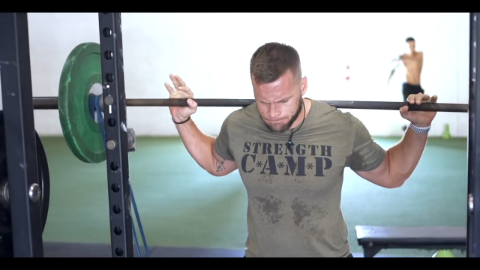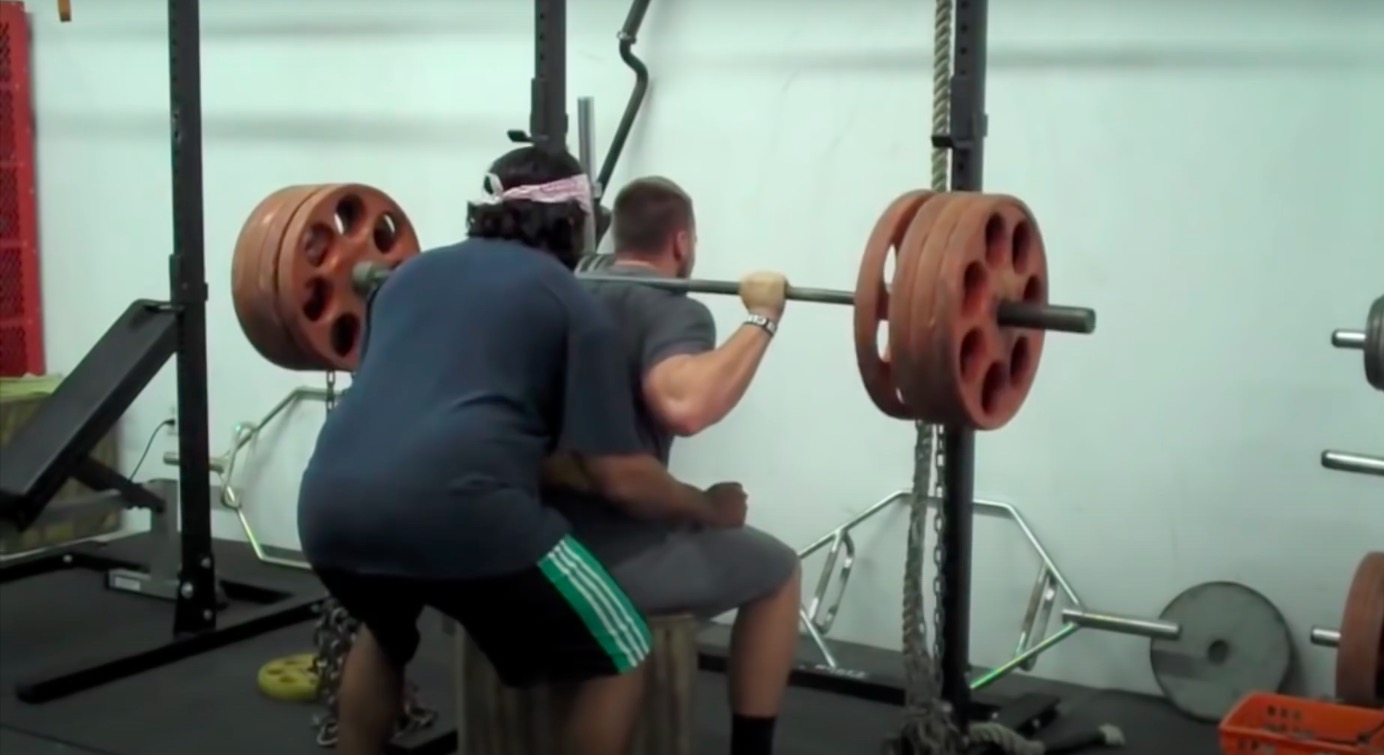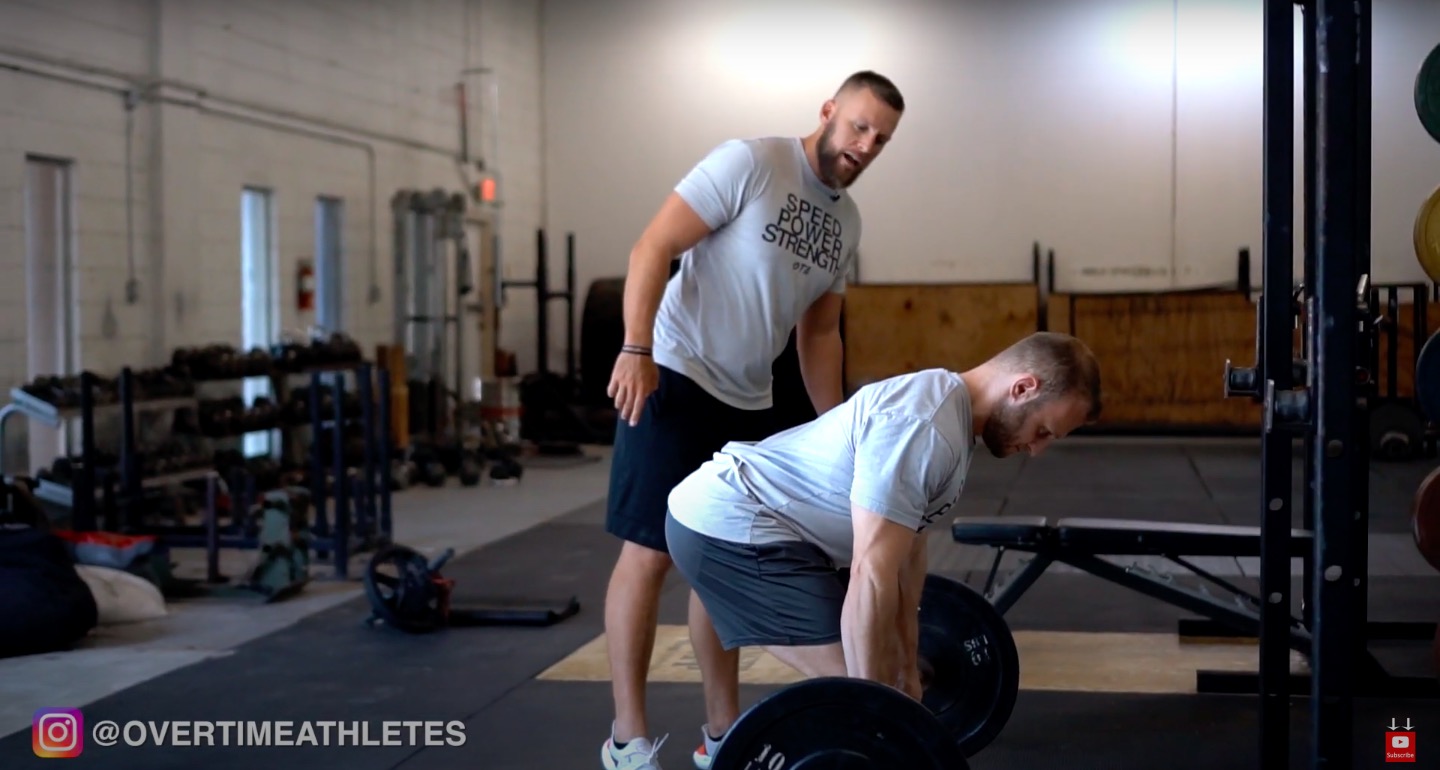Some of the most frequent questions I get are asking, “how can I get stronger on my main lifts – specially my squat?” That’s why I’ve put together the squat guide: a 1 month plan to increase your squat in 30 days.
What’s Holding You Back?
If you’re reading this, you’ve probably spent at least a few months (maybe even years) in the gym working to increase your numbers in the squat.
You’ve tried a hundred techniques:
- Poorly thrown together programs
- The squat everyday regimen
- Used every squat variation
What makes this a difficult topic, are the number of variables that come into play with the squat guide.
Everything depends on the particular athlete, their level of ability, factors like mobility. There’s many different protocols you could approach a 1 month plan with.
You guys know I love to experiment and develop new programs with my athletes or myself before I share them on here.
This really helps to sort out various training protocols and develop new, effective methods that bring about the best results.
Back in my serious training days I was able to squat a whole lot more than I can now, so recently I was thinking of the most effective way to bring my numbers back up.
I’m in the business of building stronger athletes, and I’ll never shy away from getting stronger myself. That’s why I’ve recently been working on the squat guide
If you’re just starting out and are seeking to nail your squat form or put on more volume, I’ll show you how to add intensity to your training sessions over time.
If you’re more experienced and are hitting a plateau with your squat max, I have some ideas for you to increase your squat.
1 Month Plan

I’m going to break down your training over the next three weeks into phases. We’ll alternate between various sets and reps of back squat and a box squat.
PHASE 1
The overall goal is to keep the volume low, but the intensity extremely high. This is a technique I learned through Pavel and the power of repetitions.
Week 1: Start with 2 sets of 5 repetitions of a back squat. Notice how the volume is low – you’re only hitting 10 reps overall. However, each should be performed with intensity and a weight that will challenge you.
Week 2: Next, build up to 5 sets of 2 repetitions. Here’s the big shift – while we’re still only performing 10 reps, week 2 breaks it down into less consecutive reps and more sets. This allows you to throw even more weight on the bar and build up the intensity even more.
Week 3: Finally, you’ll hit 2 sets of 6-8 repetitions. This final week is where you need to challenge yourself the most. The intensity might come down a little so you can hit all 6-8 reps but the workload stays consistent.
As you can see, we want to simultaneously increase the intensity (weight on the bar) while changing up the volume each week for new ways to stimulate muscle strength.
By continually changing the stimulus of weight on your back and the amount of reps you use each week, muscle is forced to adapt and grow stronger over time.
If this is different than the method you’re currently using to train, give yourself some time to adjust.
Remember, we’re trying to develop strength and most likely get past a plateau. I’d recommend adjusting the squat guide to best fit with your current training.
PHASE 2

The second element within the squat guide is all about the box squat.
Keep in mind, this is different than a squat to box. Here’s how I different the two:
- A box squat is when you lower yourself all the way down to be seated on a plyo box, and starting off your repetitions from a static position
VS
- When doing a squat to box, you’re coming down and just tapping the box. You’re never actually supported by the box.
Each week in the squat guide, after finishing your reps on the back squat, switch over to the box squats. Thanks to the box, now’s the time to add even more weight to the bar.
For example, if I did 5 repetitions of back squat with 300lbs, on the box squat I should be able to hit a significantly higher weight. It could be an increase of anywhere from a 100-120% increase on your back squat one rep max.
Easy enough, you’re going to use the SAME repetitions that are laid out above for the box squat weeks 1-3.

BOX SQUAT
Week 1: After finishing all your sets of back squat, you have 2 sets of 5 repetitions of box squats. The box height should be set just above parallel.
Week 2: Next week, you’ll increase the intensity (weight on the bar) and go to 2 sets of 3 repetitions. Switch up the box so that you’re using more of a medium height. Now you want to be squatting all the way to parallel.
- Make sure that you’re using the SAME weight as week 1. The difference is in the depth.
Week 3: Finally in week 3 you’re going to you’ll go all the way to 5 sets of 1-2 repetitions. These should be on an even smaller box that brings you right below parallel. This is also with the same weight as previous weeks.
- The depth of your squat provides another variable to adjust your squat performance. Hitting various depths forces you to work on mobility and builds strength in multiple areas.
PHASE 3

Another key factor to increase your squat strength is based on your supplemental movements to reach peak performance. If you’re just going through the motions on your auxiliaries, you’ll never see the best results. Perform every repetition with intensity and a goal in mind.
Here’s a few great additions to add into your workout:
- Bulgarian split squat
- Multi-pattern lunges
- RDL’s.
Additionally, make sure your rest and recovery are on point. To me, that includes a great warm-up before starting, and utilizing a solid mobility routine like this one on the regular.
By the end of three weeks (plus your deload), if you’re not hitting the numbers you’d like, consider this a first go around work towards your goals the following month.
THE SQUAT GUIDE

Just as a recap, below you’ll find a summary of the squat guide with all your sets and rep ranges:
Remember, we’re going to progressively overload each week for three weeks, and then deload on the fourth.
After performing all of your sets of back squats assigned for the day, switch to the box squat. With each week you’ll decrease the height of the box (increasing the range of motion) while keeping the weight the same.
Week 1:
- Back Squat – 2×5
- Box Squat – 2×5 (box at it’s highest, above parallel)
Week 2:
- Back Squat – 5×2
- Box Squat – 2×3 (box at parallel, using the same weight)
Week 3:
- Back Squat – 2 x 6-8
- Box Squat – 5x 1-2 (box below parallel, using the same weight)
Week 4: Deload
The Athletic Strength Formula
Like I said earlier, if you’re here you’ve probably hit a plateau with your squatting.
While this can be frustrating, I recommend that as an athlete you try and just look at it with a new perspective.
Ask: what about my training could I change? Am I using progressive overload? Am I playing around with my reps, sets, and range of motion?
I like to coach my athletes using specific strength training components. If you’re missing even just one, you’re bound to hit a plateau.
However, when the proper programming for a squat comes together – get ready to see some major results.
While the squat guide will bring you all new results with your max squat, to play like an elite level athlete you need the right training protocol.
If this sounds like the kind of program for you, you need to grab a copy of the Athletic Strength Formula.
An effective strength program like this brings so much value. I believe in this product so much, I’m even offering you a 90 day, money back guarantee.
But don’t just take my word for it… hundreds of happy athletes are bringing me feedback like:
“Added 90 pounds to my squat and bench”
“Drastically increased my squat in just 1 month”
“Easy template to build strength”
If you’re ready for major gains in the gym, more points on the field and a more athletic build…